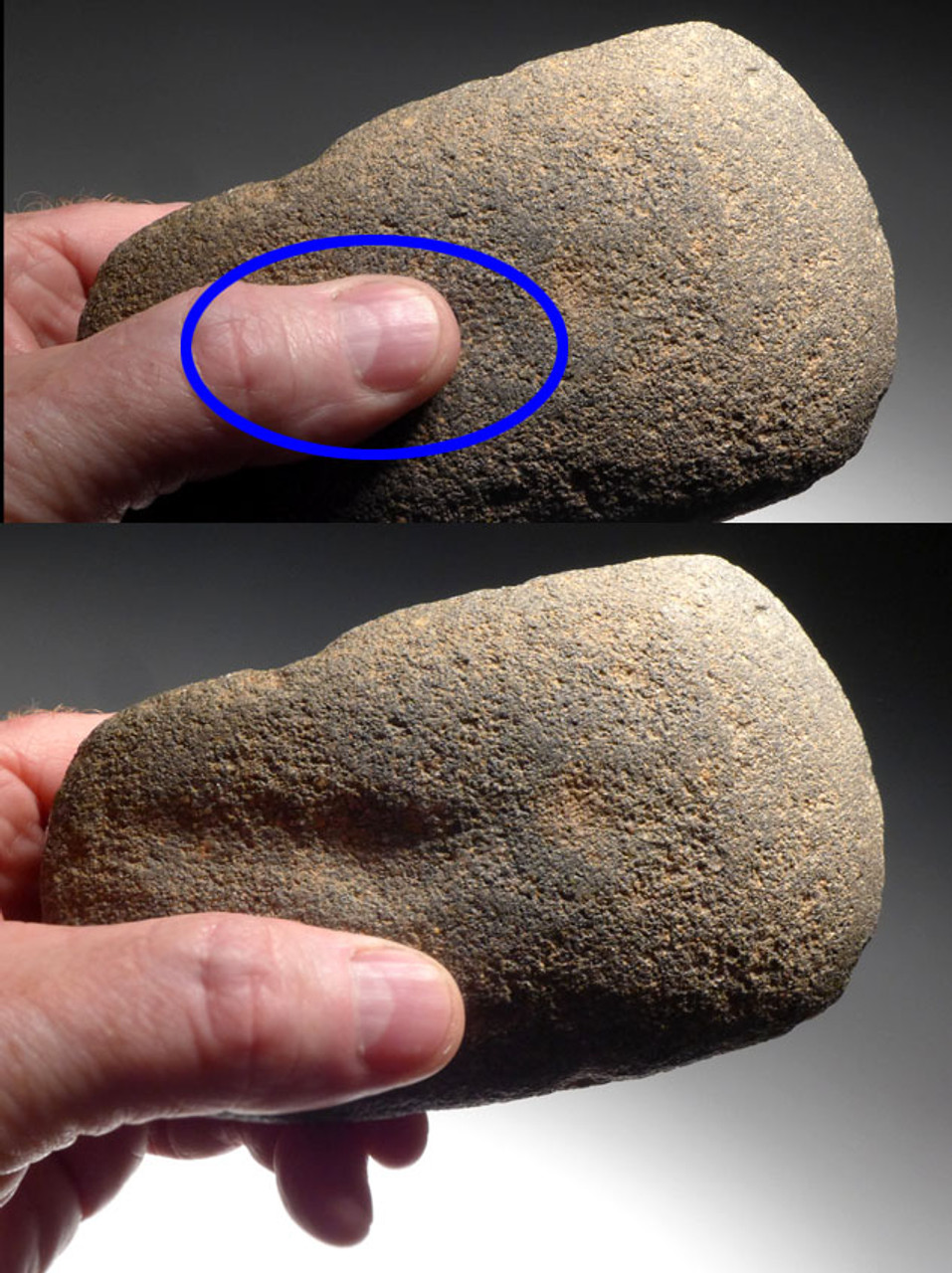Product Description
SEE MORE AFRICAN NEOLITHIC TOOLS AND ARTIFACTS
This ground stone celt axe is from the African Capsian Neolithic culture. It was found on an exposed African Neolithic site in the Sahara Desert in Northwest Africa, and dates to over 5000 years ago. Celt axes like this are made by grinding a single stone into a desired form and given a chisel-shaped chopping edge. What is extremely unusual about this specimen is that rather than typical use where the axe head is mounted into a shaft handle, this example was made to use in the hand. Grooves were made on each of the main sides for the fingers to aid in holding the axe by hand. The broad cutting edge and shape is also not typical as most of these celt axes are torpedo shaped in form. Another unusual feature is the stone from which it was made - FERRICRETE. Ferricrete is a mineral conglomerate consisting of surface sand and gravel cemented into a hard mass by iron oxide derived from the oxidation of percolating solutions of iron salts. The word is derived from the combination of ferruginous and concrete.
At this time, the majority of the region was deforested so an axe of this type would not have been used to fell trees. This axe could have been either a formidable weapon, or used to break the bones of cattle to get to the nourishing marrow. Despite this culture being Neolithic, crop cultivation was uncommon and the societies were nomadic pastoralists, raising livestock as a predominant source of food and other resources.
Intact original mineral deposits and patina deep within the micro-crevices of the surface are irrefutable signs of authenticity and age not found in modern forgeries (often seen on the market).
 US DOLLAR
US DOLLAR
 EURO
EURO
 AUSTRALIAN DOLLAR
AUSTRALIAN DOLLAR
 CANADIAN DOLLAR
CANADIAN DOLLAR
 POUND STERLING
POUND STERLING






















